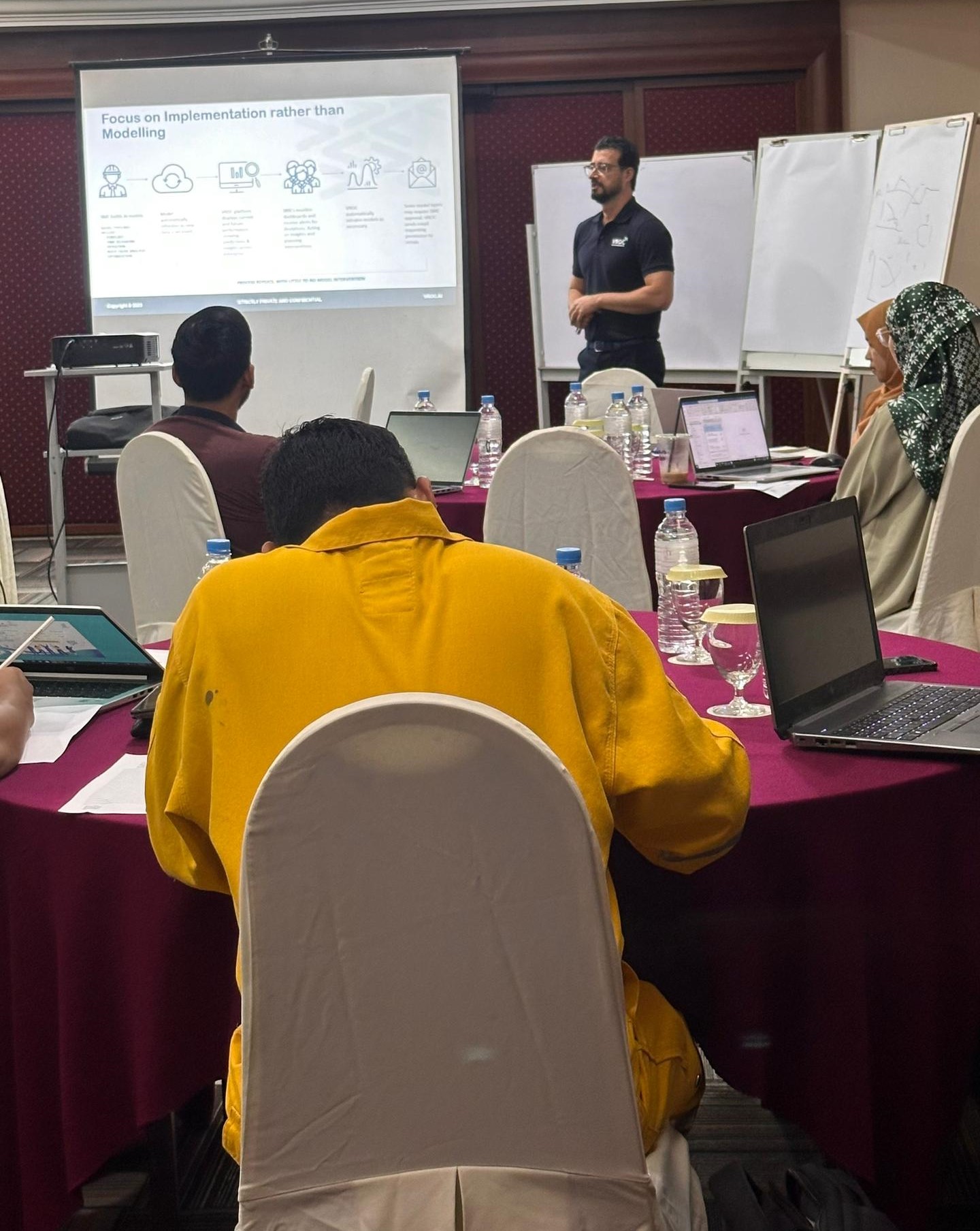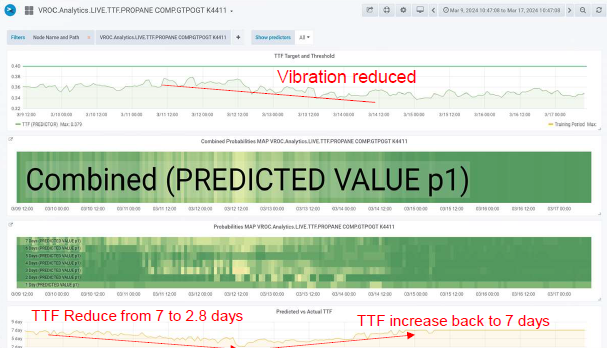Offshore oil and gas platforms are often challenged by asset reliability issues. Equipment failures have significant impacts on costs due to production downtime as well as the cost of transporting spares and technical personnel to remote and often dangerous locations. One of our clients, operating an onshore platform in a remote part of Central Asia, decided to adopt AI to help enhance their operational efficiency. Their journey demonstrates how AI and machine learning can transform not just operations but decision-making and cost optimization.
The platform’s team understood that the data they were collecting from sensors and equipment had the potential to change the way they functioned as a team. However they were highly reactive, troubleshooting issues took considerable time and lacked accuracy. During the project kick off, the operations team decided to initially focus the implementation towards predicting the performance and failures of critical systems and troubleshooting incidents.
The first critical step in the AI journey is data. The team began the task of gathering data, collecting data from over 6,000 transmitters which were
The first major milestone was reached shortly following data ingestion, when the team officially launched the technology on the platform. At this point, 27 models were developed, marking a significant step toward integrating AI into day-to-day operations. The models were focused on critical equipment that needed careful monitoring, including Compressors, Wells, Tanks, Gas Turbines, and Process Trains. The models were initially focused on predicting equipment failures and providing root cause analysis for more effective troubleshooting.
Fast forward six months, and the number of AI models grew to almost 50, with the team fully operationalizing machine learning insights into their daily activities. This implementation was proving to be instrumental in improving decision-making, operational efficiency, and cost management.
- The predictive capabilities of AI have allowed the team to forecast trends based on historical data. This means they can now be proactive rather than reactive, predicting and addressing issues before they escalate.
- Additionally, machine learning has enabled higher accuracy in analysing vast amounts of data, reducing human error and possible faulty conclusions.
- One of the major benefits has been the ability to predict when equipment is likely to fail. This foresight has helped prevent unexpected downtimes, keeping operations running smoothly.
- Automation of repetitive, time-consuming tasks has freed up engineers time to focus on complex problem-solving and optimization tasks.
- AI-driven process optimization has led to significant cost savings by ensuring consumables and staff time are used more efficiently.
- The ability to avoid unnecessary plant shutdowns or flare gas events has also helped mitigate potential financial penalties.
To illustrate the power of AI in their operations, the client has shared three specific examples where AI saved time, resources, and money:
The plant’s flash gas compressor tripped, causing a significant increase in gas flaring. The team used OPUS to build an AI-driven probability model, pinpointing the root cause in a single session, bringing the compressor back online faster than ever. This saved 14 million cubic feet of gas from being flared, equating to a cost savings of $26,000.
An engineer detected an anomaly in the propane compressor’s vibration levels using AI-based models. The team identified the issue—related to the male rotor position high vibration—and took corrective action before the situation escalated. By preventing a prolonged vibration event, they avoided significant equipment damage and potential losses of up to $23,400 per day.
The AI models predicted a shorter lifespan for an air filter on one of the platform’s gas turbines. By acting on this prediction, the team prevented a total plant blackout, which could have led to losses ranging from $23,400 to $46,800 per day. The ability to plan maintenance based on AI predictions ensured minimal disruption to the operation.
Looking to the future, the offshore team is focused on using AI in other areas of the oil and gas platform. While the initial focus has been on predictive maintenance and troubleshooting, the potential for process optimization, such as debottlenecking, remains untapped.
Their journey demonstrates that operationalizing AI isn’t just about implementing technology—it’s about transforming how teams work, make decisions, and optimize resources. Insight obtained from AI and machine learning have helped the team move from reactive to proactive and led to significant cost savings in a space of a few months. In addition, the team has now capacity to focus on more complex tasks, as the time-consuming repetitive tasks of trend and root cause analysis have been automated.
See how AI detected a Produced Water Pump failure before a shutdown - download the whitepaper
Learn the differences between predictive, preventive, and reactive maintenance. Compare costs, benefits, and risks
Read ArticleHow to confidently move from pilot to enterprise-wide AI adoption
Read ArticleInterested in a demo of one of our data solution products?
DataHUB4.0 is our enterprise data historian solution, OPUS is our Auto AI platform and OASIS is our remote control solution for Smart Cities and Facilities.
Book your demo with our team today!
Complete the form below and we’ll connect you with the right VROC expert to discuss your project. Whether you’re launching a pilot, scaling AI across your enterprise, or integrating complex systems, we’ll help you turn your data into actionable insights—fast, efficiently, and with confidence.
The efficient deployment, continuous retraining of models with live data and monitoring of model accuracy falls under the categorisation called MLOps. As businesses have hundreds and even.
Learn more about DataHUB+, VROC's enterprise data historian and visualization platform. Complete the form to download the product sheet.
Learn how OASIS unifies your systems, streams real-time data, and gives you full control of your smart facility—remotely and efficiently. Complete the form to access the product sheet.
Discover how OPUS, VROC’s no-code Industrial AI platform, turns your operational data into actionable insights. Complete the form below to access the product sheet and learn how you can predict failures, optimise processes, and accelerate AI adoption across your facility.
Interested in reading the technical case studies? Complete the form and our team will be in touch with you.
Subscribe to our newsletter for quarterly VROC updates and industry news.